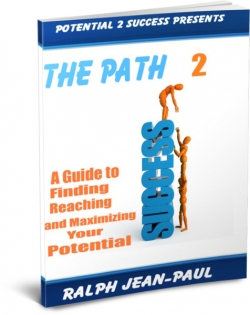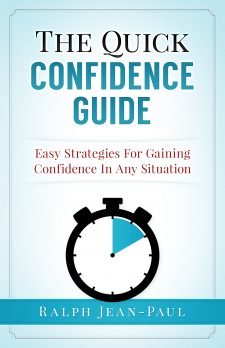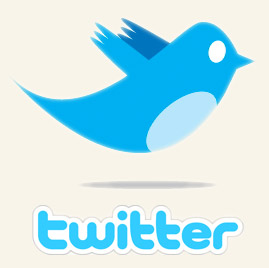I think it is safe to assume that you would like more time. To me, time is the most valuable asset in the world. Time is something that we all need but cannot create more of. Time with our families, time to grow our businesses, and time to do the things we love.
But there are a lot of things that rob us of our time. In this article, I will show you how I used some productivity methods to double the amount of work I completed in a week while saving myself a ton of time.
5 Days of Work Done in 2.5 Days
The third week of the month is usually the busiest for me. During that week, my team and I are preparing for the next month. Perpetration for the following month is so important that I put off some other tasks until all the work is done.
If I’m not careful, the tasks can swell and leak into the following week. This usually puts me in a tough position since there are several other things that I need to oversee. For example, this month I needed research email marketing campaign services, create a new sales initiative, and hire a new employee.
I began to wonder if there was a way to take the project that would usually take 5 days and cram it into a shorter amount of time. Maybe 2 or 3 days? I first dismissed the idea because, for the past 6 months, it has been normal to spend the entire week on the projects.
But the more I thought about it, the more I realized that it had to be done. Spending less time on this project would not only give me a few extra days to work on other things, it would actually open up time throughout the month. It would take some long hours and an intense amount of focus but it was possible. Plus, it would free me up to work on bigger more important projects throughout the week. And I liked the sound of that.
I convinced myself that it was worth a try.
Things Got Very Uncomfortable
I run a remote company and work out of my home most of the time. Because of this, I can work during any time of the day. And I knew that to complete this challenge, I would have to work at odd hours. Since this was my first time doing this, I did not know what to expect.
Halfway through, I started to doubt if I could complete the project without completely burning out. There was a period of time when I worked 6 hours straight, took a break for an hour, and then worked another 6 hours. I took a 4-hour nap then woke up to work more long hours. It began to feel very uncomfortable because it seemed like I wasn’t making a dent in the project.
I first thought, “man, this sucks”. Then I noticed that I was making progress. Then, I realized that in comparison to stretching the work over 5 days, I was actually getting things done faster even though it wasn’t obvious at first glance. I also realized that there was a trend in my productivity that I was following (more on that later).
Let me first tell you that this is going to get uncomfortable. When I tried this, I kept wanting to go back to the old time wasting habits that most people experience while working. I was tempted to check my phone, get up to get a snack from the refrigerator and even to stop to daydream.
To an extent, by pushing myself to complete a week’s worth of work in 2.5 days was a rewiring of my brain and habits. You can expect to experience the same uncomfortable feelings and encounter the same temptations.
You may not have a big project to tackle but understanding these productivity methods can really help save you time and energy.
How to Double Your Productivity
Understand Your Productivity Curve
Everyone is different when it comes to when they are the most productive. For example, I am much more productive when I wake up early. Some people are night owls and need to stay up late to get stuff done. Others tend to get going during the afternoon. No matter what time of day you are your most productive, it is important to understand at what point during your production you are the most effective.
The productivity curve is the general idea that when you first begin something, your productivity plummets in the short term. Even if it is something that you are comfortable doing. However, the more you continue to do it, the more proficient you become. Then, as time goes by and fatigue and other factors enter, your productivity will decline.
This idea has been theorized in the use of technology but I think it applies when it comes to productivity as well.
I’ve created a productivity curve below to illustrate how the curve works.
Once you understand that productivity isn’t flat, you can align your tasks accordingly. Also, you should schedule the tasks based on this curve as well. For example, the tasks that require me to be the most focused and are the most important, I tend to do during “max productivity”. The tasks that may be more repetitive or that require less of my attention and are on the mundane side, I do right at the beginning or near the end of my curve.
Remove All, and I Mean ALL, Distractions
Speaking of technology, it seems that our technological advances are not necessarily making us more productive. With the increased use of social media and smartphone apps, there has been a shortening of attention spans. In a 54-page study, Microsoft sought to answer the question of how technology is affecting the average human attention span.
The researchers collected data from surveys to determine the impact that digital media and information are having on everyday life. The researchers also monitored over 100 people’s brain activity with in-lab monitoring, using electroencephalograms. The findings revealed human attention spans are shrinking.
In another study published in the Journal of Media Education, researchers concluded that college students are more distracted than ever. This study concluded that students spent a fifth of their time in class doing things on their devices that have nothing to do with their school work.
If you are going to do this, I mean, really do this, you need to limit the number of obstacles. During my 2 days of intense work, I had to let nothing stop me from completing the work. I turned off my phone and closed all browser windows that were not related to the work I was working on.
Whether your distraction is technology or something else, it is important that you distance your self from whatever it is that distracts you. Once your distractions are removed, it will be much easier to focus on the tasks at hand.
Learn to Crunch Time
During my 2 days, I tested something I called “crunching time”. It is a variation on Parkinson’s Law which is a theory that things like tasks will swell to fill the time allotted for those tasks. My tasks consisted of reviewing the work of my team as well as administration tasks that I do not outsource or delegate. I took a good look at all of those tasks and asked myself, honestly, “how much time would it take me to do each task?”
Then, I broke the tasks down even further and figured out what the tasks consisted of and why it would take that long. From there, I reduced the amount of time allotted for that tasks between 20%-35%. When I had the amount of time I would spend on each time, I went back to the task in order to remove any extra work associated with that task.
Example: Sending emails to my staff
I’ll use a simple example of how I did this. I needed to send 7 separate emails to 7 staff members. 6 of those emails were going to be informational as well as giving feedback on the team member’s performance, which I love to do. The 7th email, however, was not going to be as pleasant. In fact, I was having a lot of doubt on whether or not I was going to keep the team member on staff. I had to communicate to her how her performance needed to improve. Not an email I looked forward to writing. I gave myself 20 mins to send these emails.
So I broke down the email reviews into 3 categories; great, good, and poor. This is what it looked like
- 3 “you’re doing great” emails (6 minutes)
- 3 “you’re doing good” emails (6.5 minutes)
- 1 “I’d hate to fire you but I will…” email (6.5 minutes)
The single email would definitely take the longest so I did that first. I shortened this creating a short template to follow. First, I wanted to give positive feedback and thank her for completing projects on time. Then I would tell her the issues we are having with her work. Then I would address how it affects the company. Then give her steps to improve and consequences if there is no improvement.
I used the same template for the other staff members but the other emails were much easier and faster to do since there were fewer issues with their work.
Having a template to follow allowed me to stay focused on the purpose of the emails and having a time restraint forced me to streamline my communication so that I do not include unnecessary banter or irreverent information. This also made the emails more clear and effective. I used the time crunch exercise with each tasks. I know that it changed the way I approached each task. Most of the things we need to do can be done in less time if we use the time crunch and stick to those deadlines.
Use Technology But DO NOT Depend On It
With every problem that faces humanity today, there is an app developer, software engineer, or inventor attempting to solve that problem. Technology has really made life more convenient for us. However, with every technological advance, a new problem is created which needs a technological innovation to correct that problem and so on.
As I mentioned before, one of the problems created by technology is the shortening of our attention spans and the creation of more distractions. To solve these problems and other like them, apps like FocusOn and Freedom have been created to help fight people fight distractions and increase focus. The problem is when we expect that these technologies will fix these issues.
In order to dramatically increase your productivity, you need to use technology as a tool instead of looking at it as the answer. To-do list apps like Todoist may help you stay organized but understand that they all have their limits. It is really up to you to do the work.
Conclusion
Time is a valuable asset and we need to make the most of it. This experiment was a successful one for me and I fully intend on refining and applying this process each month. Hopefully these techniques will help you save time and get more done.
Don’t forget to subscribe below so you can get notified of new articles!



 Subscribe for free today and get a FREE copy of my ebook The Path 2 Success. Begin your path today!
Subscribe for free today and get a FREE copy of my ebook The Path 2 Success. Begin your path today!










